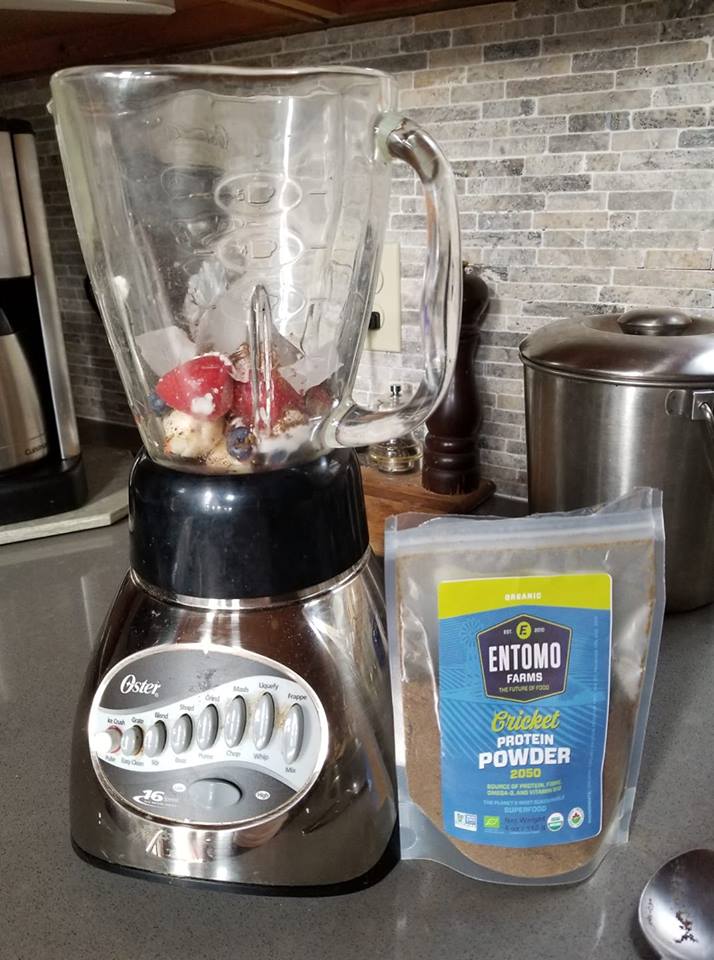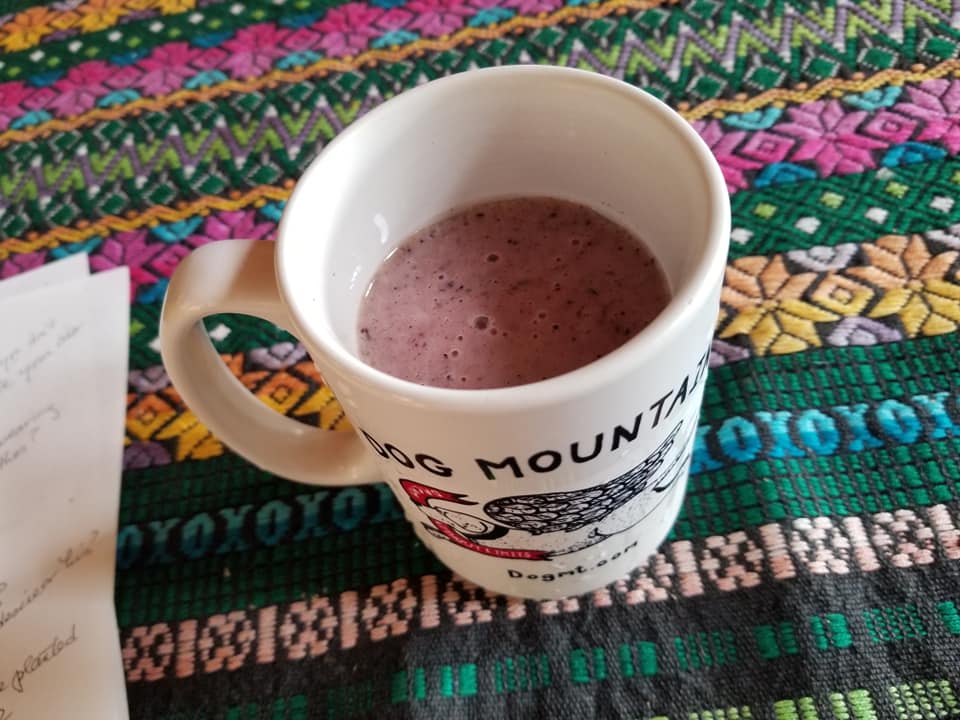Bug Eating
 When I was growing up, supper always centered around meat—Sunday roast, skirt steak pounded into tender submission and suffocated in gravy, meatloaf, pork chops fried crispy in Crisco, breaded chicken also Crisco-fried. My fingers were always greasy.
When I was growing up, supper always centered around meat—Sunday roast, skirt steak pounded into tender submission and suffocated in gravy, meatloaf, pork chops fried crispy in Crisco, breaded chicken also Crisco-fried. My fingers were always greasy.
When I moved away for college, I gave up meat—except for Thanksgiving turkey—and subsisted on stir-fried veggies and rice, flavorless tofu, hearty winter squash, and lots of peanut butter on whole grain bread.
Later, I married a meat-eater and went back to consuming mammals although my husband chided me when I ate the vegetables first and left half the gristle on the plate. I coaxed him toward seafood as a compromise, and he prepared luscious stuffed shrimp and blackened swordfish.
After we divorced, I went back to salads and squash. My second husband is happy with a bowl of buttered pasta although he enjoys a fat burger when we eat out. We eat out a lot.
A dilemma arose when my doctor checked my bloodwork and declared me deficient in protein. I had an aversion to methane-producing beef,  considering them four-legged cholesterol-producing bovines, and ate more almond butter and leafy greens.
considering them four-legged cholesterol-producing bovines, and ate more almond butter and leafy greens.
But the greens and nut butter weren’t enough to spike my protein level. Then a friend sent me a link to a company that farms and sells insects for consumption—mealworms, too.
Bugs? Worms?
I’ve read that insects are a staple food in some countries—ants, cockroaches, even roasted grasshoppers and crickets. But I get queasy about the thought of eating bugs of any kind.
The Huffington Post reported that a composer recorded the sound of evening crickets. When he slowed down the recording on playback, what he discovered is that slow crickets sound like a resonant human chorus of voices as if singing in a cathedral. As a girl, I caught crickets and let them crawl over my hands. How in the world could anyone eat such sweet creatures?
The Ontario company, Entomo, touts insects as the next superfood. “Cricket powder is a complete protein, boasting all 9 essential amino acids, is high in B12, fibre, iron, Omega 3 and 6, and many other micronutrients,” the website says. “It is almost 70% protein, has more calcium than milk, more iron than spinach, and almost 20 times more B12 than beef.”
A price of $15 for a four-ounce bag seemed steep, but I was sold on the bugs  being organically farmed and humanely harvested. After they are roasted and ground into powder, they wouldn’t look at all like insects, I reasoned.
being organically farmed and humanely harvested. After they are roasted and ground into powder, they wouldn’t look at all like insects, I reasoned.
When my bag of bugs arrived in the mail, I read the enclosed card with photos of foods from soups and cookies to a bowl brimming with full-size roasted crickets. “Thank yourself for making the choice to include the healthy goodness of insects to your diet. Nutritious, Delicious and Sustainable,” the card read, with advice to “enjoy them in so many ways.”
Through the plastic pouch I could see that the cricket powder was the color of, well, crickets. I opened the pouch, took a whiff, and inhaled the distinct aroma of fertilizer. I wasn’t sure “enjoy” was the correct choice of words.
Nevertheless, I had the crickets and figured I had better use them.
 Figuring I could disguise the fertilizer flavor with fruit, I opted for a smoothie of berries, banana, apple cider, maple syrup, yogurt, and a few chia seeds. Rather than a tablespoon of cricket powder, I started with a teaspoon and a half. I was conducting a test, after all.
Figuring I could disguise the fertilizer flavor with fruit, I opted for a smoothie of berries, banana, apple cider, maple syrup, yogurt, and a few chia seeds. Rather than a tablespoon of cricket powder, I started with a teaspoon and a half. I was conducting a test, after all.
 When I emptied the contents of the blender into my mug, I worried that the dark little spots floating at the top of the smoothie were pieces of cricket but convinced myself that they were chia seeds or specks of blueberry. Then I held my breath and took a gulp. The sweetness from the maple syrup hit me first, but the aftertaste was definitely earthy—not like the fertilized fields that assault me in the spring and fall here in Vermont but definitely crickety. I managed to finish the concoction and after a couple more mornings of cricket smoothies, I’m getting used to the taste.
When I emptied the contents of the blender into my mug, I worried that the dark little spots floating at the top of the smoothie were pieces of cricket but convinced myself that they were chia seeds or specks of blueberry. Then I held my breath and took a gulp. The sweetness from the maple syrup hit me first, but the aftertaste was definitely earthy—not like the fertilized fields that assault me in the spring and fall here in Vermont but definitely crickety. I managed to finish the concoction and after a couple more mornings of cricket smoothies, I’m getting used to the taste.
With the powder package came a recipe for “chocolate chirp cookies,” which looks like a regular cookie recipe except for the addition of a quarter cup of cricket powder. My husband loves cookies, so I figured it wouldn’t hurt to give the recipe a try.
Thankfully, the batter and even the scent from the oven had no trace of crickets. When the cookies had cooled, I offered a plate of them to my husband. He bit into one and frowned. Then he took another bite.
“How are they?” I asked.
He hesitated. “Good,” he said finally.
I tried a couple cookies myself and found them tasty as long as I didn’t think about insects while I ate them.
Over a few days my husband ate all the remaining cookies. I still haven’t told him about the secret ingredient and so far he hasn’t let out a single chirp.
This is a great article. I know that some huge percent of the world’s population rely on insects for their primary protein source, but your article makes the practice seem mouthwatering good. I can’t wait to try it out! Thanks Ellie